Nibs: a comparison
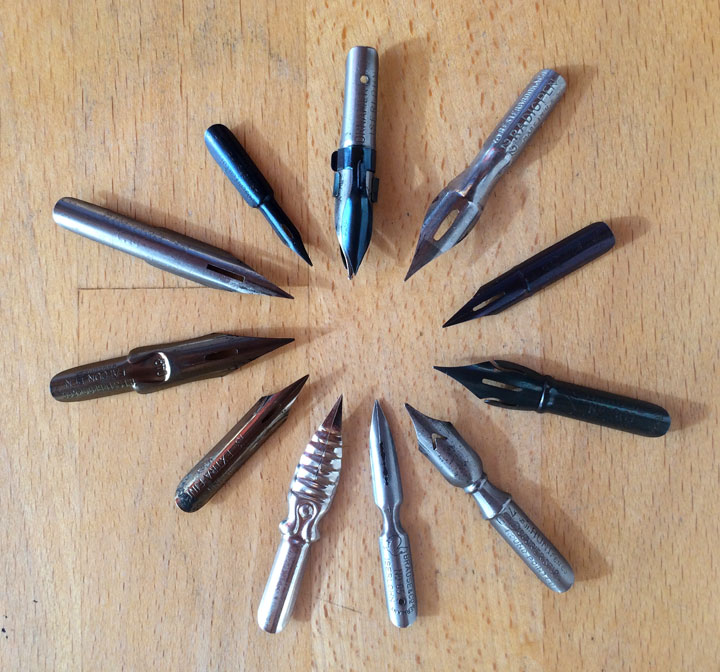
When I got into regularly drawing with dip pens, nibs were easy to find at the local art store and I could get them for thirty cents a piece. So it wasn’t too hard to try out different kinds. These days, not all art stores carry nibs and they tend to be around one to three dollars each. They’re still pretty cheap for an art supply, but you have to actively seek them out, usually from on-line retailers (I’ve listed some at the bottom). Since trying out different models takes a bit more effort, it helps to narrow your search a bit. One way to do that is to find out what nibs your favorite pen-and-ink artists use. The other way is to look at guides like this one.
Finding a nib you like is a matter of taste. But there are certain qualities to look for in any nib (in each category a spectrum is possible):
Thin line - Thick line
What is the size of the line produced when standard pressure is applied to the nib?
Smooth - Scratchy
How does the nib feel on the page?
Stable - Flexible
How does the nib feel as you increase pressure on it?
Steady - Elastic
How quickly does the nib return to its original shape?
High modulation - Low modulation
How much variation can you get out of the line created?
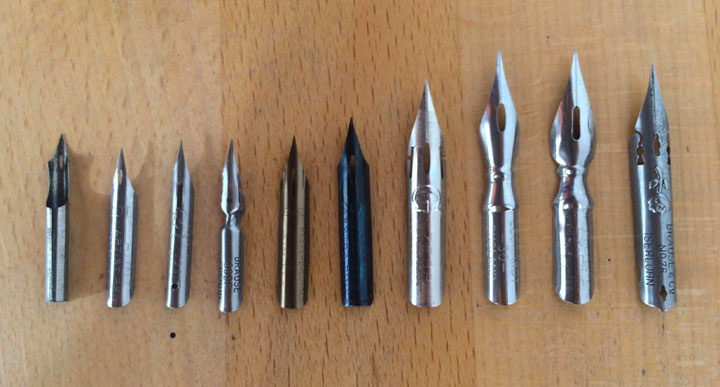
The following is a brief overview of a few pointed pen nibs. This is by no means an exhaustive list; it’s just a few of the more common nibs I’ve used and enjoyed.
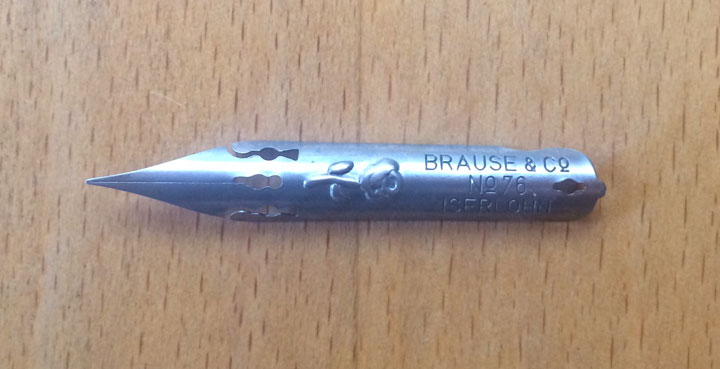 |
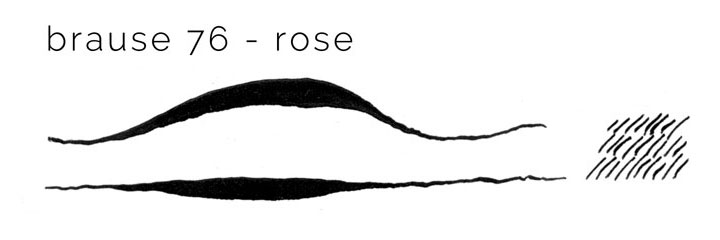 |
Brause 76
I hadn’t heard about Brause nibs when I started out. What I have discovered is that the Brause nibs are consistently the best made nibs I have ever tried. The 76 is also called the “Rose” due to the little rose embossed on the shaft. It’s a fairly large nib and so creates wider lines, but it is incredibly flexible. The 76 is the closest thing to inking with a brush of any nib I’ve tried. It’s a lot of fun.
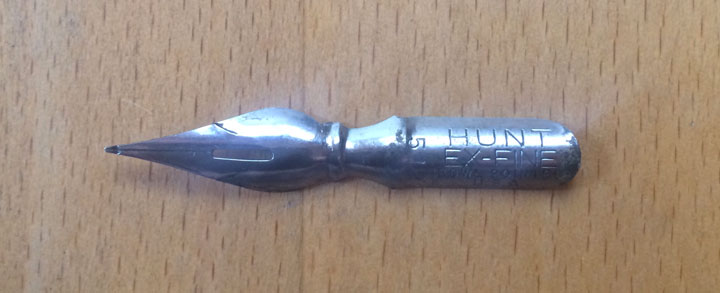 |
 |
Hunt 512
This is a stiff, not very flexible nib with a smooth feel. It has a “bowl tip”: meaning that the point is rounded slightly. This makes drawing curves easier. I used to use this nib for all my lettering, but have stopped because it seemed like the 512s were getting scratchier and more frequently defective. I feel that the Hunt nibs have really gone down in quality over the years.
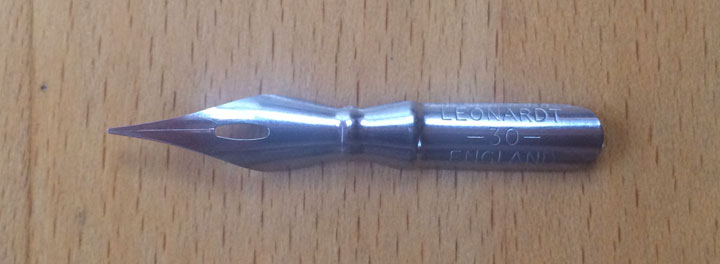 |
 |
Leonardt 30
This is the nib I use for lettering now. Leonardt nibs have recently made a comeback. The 30 is solid and stiff, which works well for consistent lettering. It’s a lot like the Hunt 512, but with a bit more modulation possibility and a smoother feel.
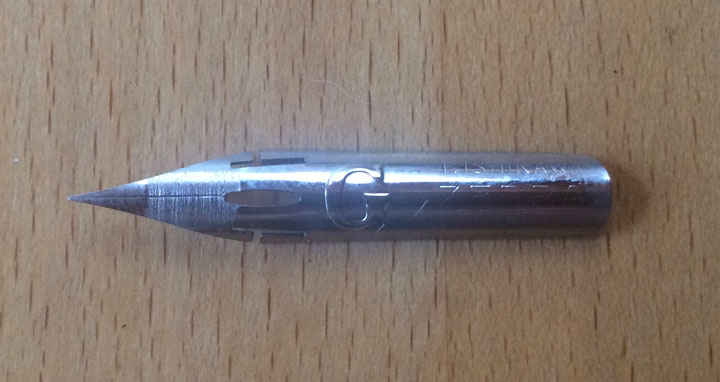 |
 |
Zebra G
Comics artists inspired by manga are often turned on to the fabled “G” nib. In my limited experience, the Zebra G nib is better than the Nikko G nib. It’s not very flexible, but delivers very controlled lines. For a larger nib, the line it creates is actually fairly fine. The nib feels strong and it lasts a long time. Personally, I find the nib a bit too scratchy and inflexible for my tastes. I’ve heard that the Tachikawa G is more flexible, but I haven’t tried it.
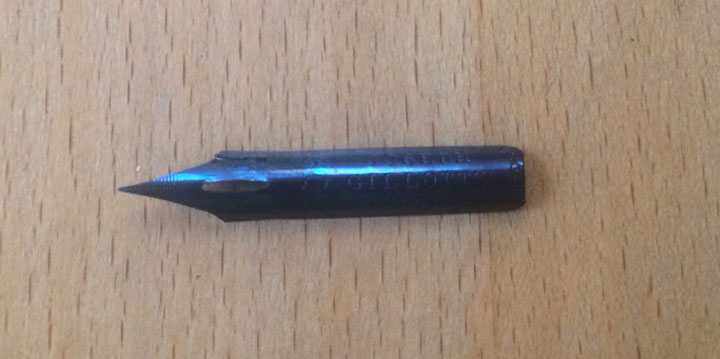 |
 |
Gillott 303
This is a reliable nib with a bit of flexibility. While there are smaller Gillott nibs, I’ve found that the 303 actually can produce a thinner line than many of them. So this is a good nib to start with if you want to try a nib from Gillott. Overall though, I find the 303 a bit too scratchy for my taste, and this is true of all the Gillott nibs I’ve used.
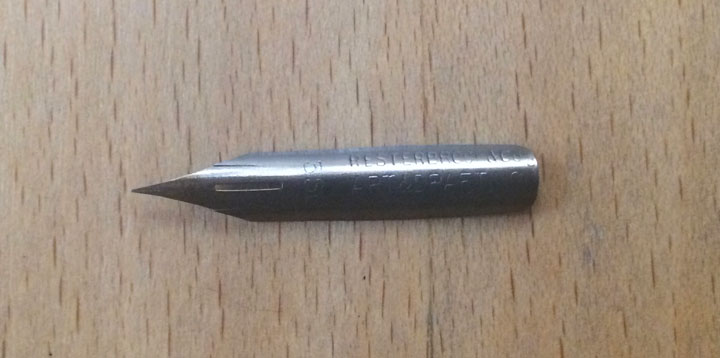 |
 |
Esterbrook 356
I got this nib on eBay. Esterbrook was a standard line of nibs once upon a time. From what I’ve tried, all their nibs are solidly built. The 356 is a bit stiff and doesn’t offer a lot of line variation.
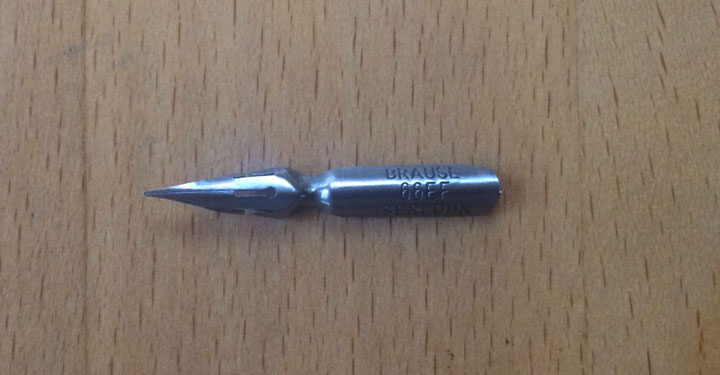 |
 |
Brause 66ef
I used this nib when I drew Carnivale. It produces a fairly fine line, but has a very springy feel. Even so, it is easy to create a stable line with the 66ef. When you vary the pressure on the nib, the line fluctuates evenly. It doesn’t suddenly swell or drop off. I think this is due to the quality of the metal used to make the nib. While the point of the nib is fine, it is also slightly rounded, like the Hunt 512. That means that you can almost draw a circle with one stroke, versus composing a circle from two strokes as you have to do with most nibs. It also has a good ink capacity, so you can create long, flowing lines. Overall, it’s a nice nib and would be a good nib to start with if you wanted a fine line.
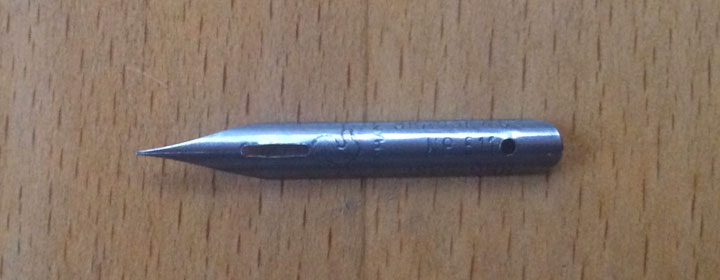 |
 |
Brause 511
This is my favorite nib and the one I draw with most often now. When I first used this nib I liked how smooth it was, but I thought it was a bit too unyielding. Yet this was due to the fact that I was coming off using the Hunt 100, which is the most elastic nib out there. The Brause 511 is not very elastic, but capable of a nice bit of variation if you apply the pressure. Don’t be shy with it; bear down and see what it can do. Since it is more stable and steady, when you apply pressure, the nib smoothly comes back to a thinner line. You might be able to see the contrast with the Hunt 100. With the 100, the line drops back quickly to a thin line, making for a little cliff after the large swell. The 511 modulates at a more consistent rate. So this nib offers a lot of variability while not sacrificing control. And it feels like a dream on the page. This is why I love this nib so much.
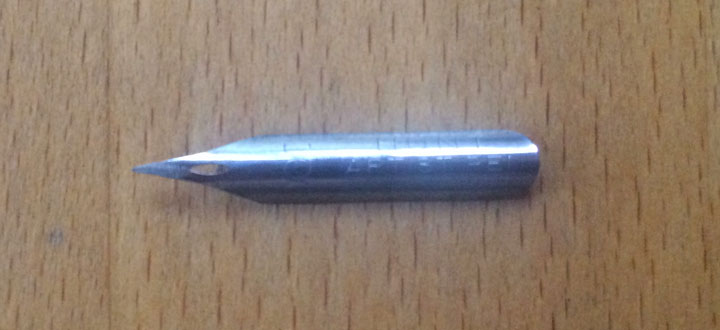 |
 |
Hunt 100
At one time, the Hunt 100 was my main drawing nib. What I love about it is it’s incredible springiness. The nib is very elastic and flexible. Because of this, it takes a steady hand to control it, but it is capable of making some very expressive marks. Yet the flexibility of the nib also means that it’s not very good for hatching, at least if you want a consistent size to your hatch marks. There are two main reasons that I no longer use this nib. One, it wears out fast. The elasticity of the nib is due to the lightness its metal and this light metal wears out quickly. Second, this nib has made me want to scream one too many times. There is nothing more frustrating than wanting to draw but having no ink flow from your pen. I’ve had this problem more often with the Hunt 100 than with any other nib I’ve ever tried. When I was more inexperienced, I thought the problem was me. But I’ve since realized that it’s the nib. So, this is an expressive nib, but not one that you want to rely on. Honestly, this nib has caused me more frustration than any other.
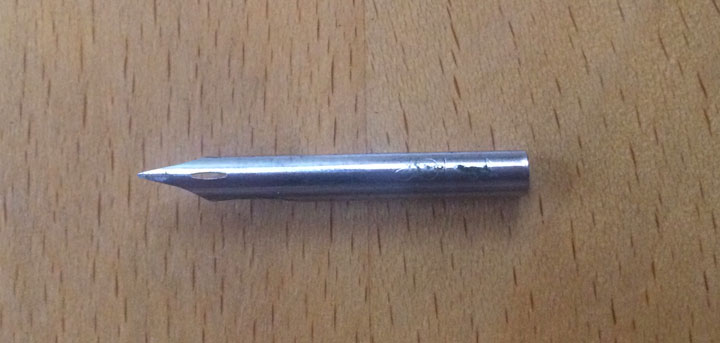 |
 |
Hunt 102
This is a small tubular nib, which, unsurprisingly, creates a very fine line. So if you want small marks, this is a nib to try. I’ve found though that at a certain point, lines can get so small that they don’t reproduce well. Since I create comics, this is a concern for me. So I find the 102 too small. The Brause 515 is a similar nib, though not quite as thin, yet with a much smoother feel.
On-line nib retailers:
JetPens
Pen-and-Ink Arts
Scribblers
Other on-line nib guides:
Beepily
JetPens
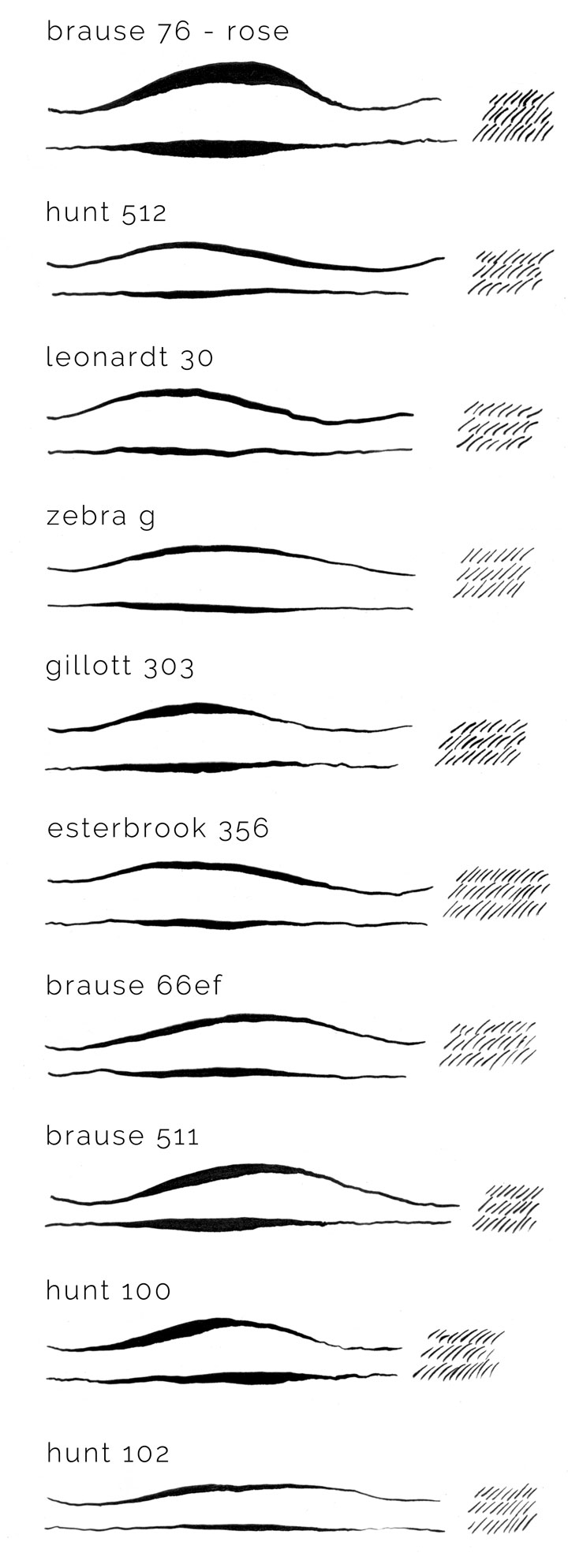
(written December 23, 2016)
|
